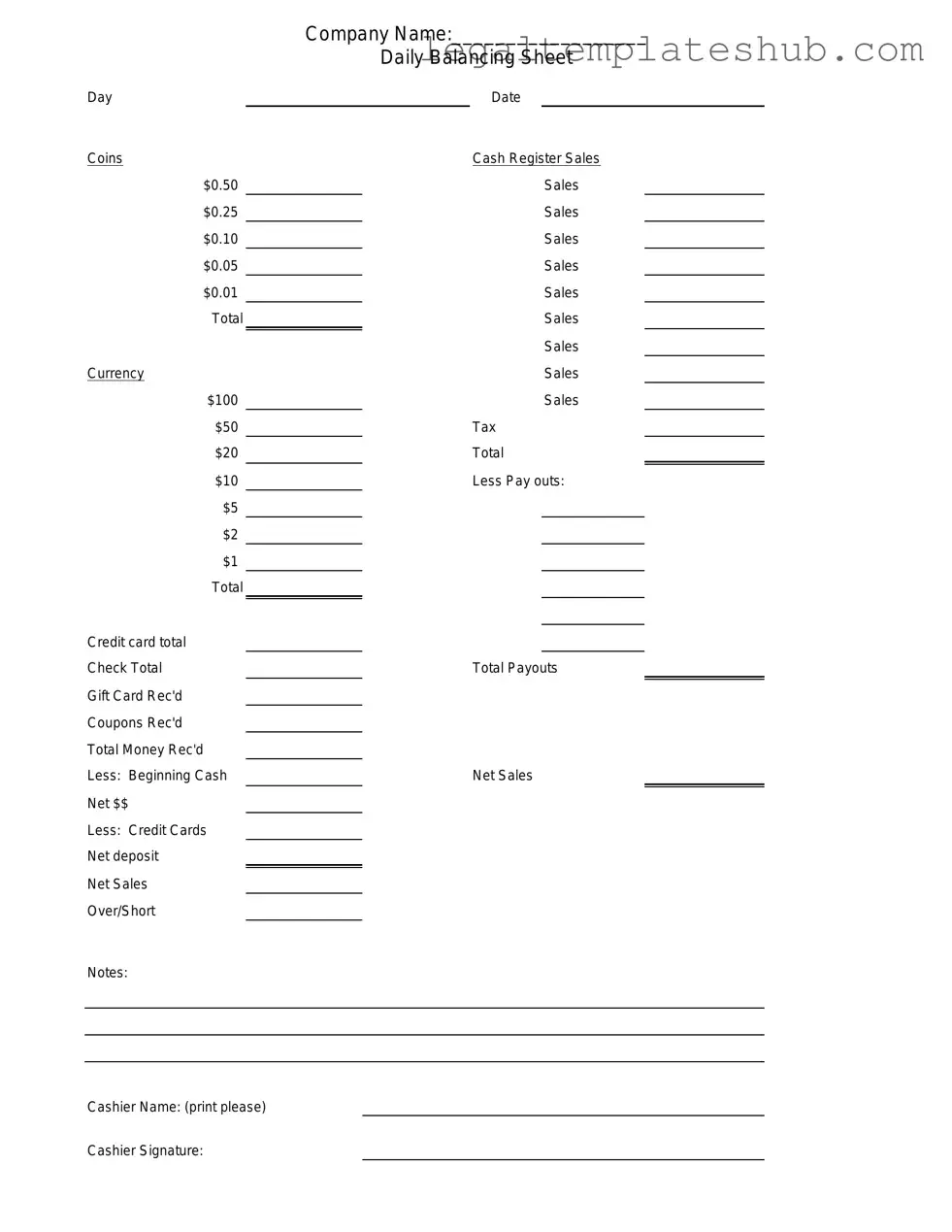Blank Cash Drawer Count Sheet PDF Form
The Cash Drawer Count Sheet is a document used to record the amount of cash in a cash drawer at the end of a business day or shift. This form helps ensure accurate cash management and accountability, allowing businesses to track discrepancies and maintain financial integrity. For a smooth and organized process, consider filling out the form by clicking the button below.
Access Editor
